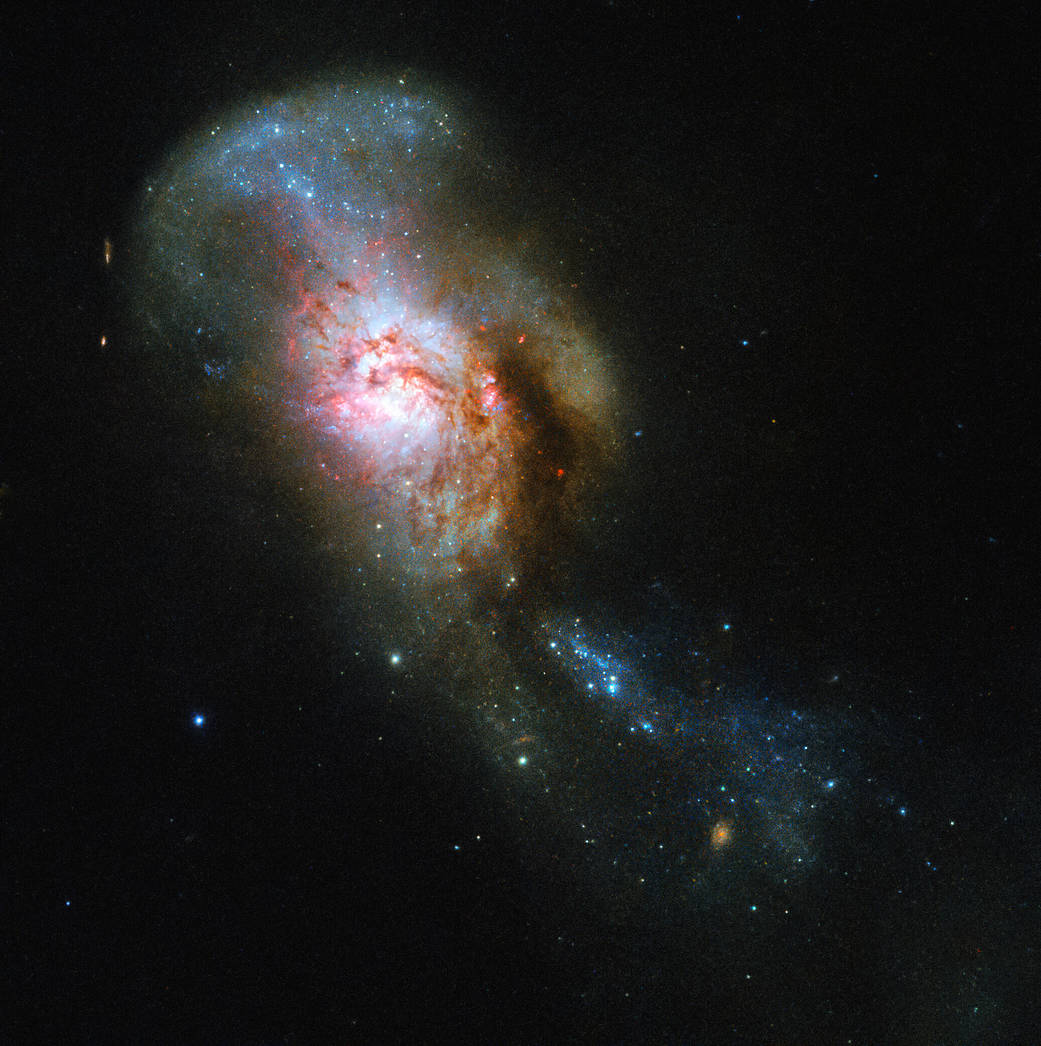The galaxy pictured in this Hubble image has an especially evocative name: the Medusa merger.
Often referred to by its somewhat drier New General Catalogue designation of NGC 4194, this was not always one entity, but two. An early galaxy consumed a smaller gas-rich system, throwing out streams of stars and dust into space. These streams, seen rising from the top of the merged galaxy, resemble the writhing snakes that Medusa, a monster in ancient Greek mythology, famously had on her head in place of hair, lending the object its intriguing name.
The legend of Medusa also held that anyone who saw her face would transform into stone. In this case, you can feast your eyes without fear on the center of the merged galaxy, a region known as Medusa’s eye. All the cool gas pooling here has triggered a burst of star formation, causing it to stand out brightly against the dark cosmic backdrop.
The Medusa merger is located about 130 million light-years away in the constellation of Ursa Major (the Great Bear).
Text credit: ESA (European Space Agency)
Image credit: ESA/Hubble & NASA, A. Adamo
在哈勃太空望远镜拍摄的这张照片中,星系有一个特别令人回味的名字:美杜莎星系并吞者。
美杜莎星系并吞者在新通用目录被枯燥的命名为NGC 4194,它并不总是一个实体,而是两个实体。早期的星系消耗了一个较小的富气体系统,将恒星和尘埃抛射至太空。这些抛射物从合并后的星系顶端升起,类似于古希腊神话中美杜莎头上缠绕的蛇发,美杜莎是一种怪物,以其头上的蛇发代替了毛发而闻名,这也为该物体赋予了一个有趣的名字。
美杜莎的传说认为任何看到她的脸的人都会变成石头。但现在你可以在合并星系的中心,也就是被称为美杜莎之眼的区域,毫无畏惧地饱享眼福。这里冷却的气体汇集引发了恒星的形成,使得它在黑暗的宇宙背景下显得格外明亮。
美杜莎星系并吞者位于1.3亿光年之外的大熊星座。
文字来源:ESA
图片来源:ESA/Hubble & NASA, A. Adamo







